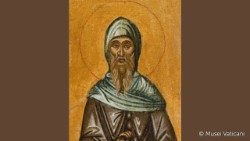Saint of the Day for 17 January

Saint of the Day 17 January: Celebrating the Lives of the Church’s Saints
Every day, the Catholic Church honors a saint or blessed who stood out for their faith, dedication, and love for God. The Saint of the Day is an opportunity for the faithful to learn more about the history of the Church and be inspired by the witness of these men and women who lived according to Christ’s teachings.
The Meaning of the Saint of the Day
The celebration of the Saint of the Day is a Church tradition that helps us remember those who were examples of faith and holiness. Saints may have been martyrs who gave their lives defending their faith, missionaries who spread the Gospel, or ordinary people who lived in deep communion with God through simplicity.
Learning about each saint’s story inspires us to live with more love, patience, and hope. It also reminds us that we are all called to holiness.
Why Do We Celebrate the Saints?
Saints serve as models of Christian life. Their stories show us that, despite challenges, it is possible to live according to God’s will. Moreover, the faithful often seek the intercession of saints, believing that they are close to God and can pray for our needs.
Following the Saint of the Day is a way to strengthen our spiritual journey and learn from those who dedicated their lives to serving God. May we follow their examples and strive each day to live with greater love, faith, and hope!
🙏 May today’s Saint of the Day intercede for us and inspire us to live according to God’s will!

Asceticism and prayer
His life was marked by solitude, fasting and work. Orphaned at 20, as a young man he gave all his goods to the poor and retired to the desert, where he also fought against the temptations of the devil, choosing the path of asceticism and prayer. Anthony was responsible for the establishment of families of monks who, under the guidance of a spiritual father, consecrated themselves to the service of God.
Saint Anthony and the blessing of animals
St. Anthony is often depicted next to a pig with a bell around its neck. This iconographic representation is linked to the fact that the ancient hospitaller order of the “Antonines” raised pigs because the fat of these animals was used to anoint the sick affected by ergotism. This disease was then called "the fire of Sant 'Antonio". On his feast day, the stalls are blessed, as are any domestic animals brought for blessing. In the iconography is associated with St. Anthony figures also the hermit’s staff in the form of T, the tau, the last letter of the Hebrew alphabet.
A gift from God
In the biography Vita Antonii, St. Athanasius wrote these words referring to St. Anthony: "That he was everywhere known, admired and desired by everyone, even those who had not seen him, is a sign of his virtue and God-friendly soul. In fact, neither for writings nor for a profane wisdom nor for any capacity is Anthony known, but only for his piety towards God - and no one could deny that this is a gift from God. As indeed we would not have heard in Spain and in Gaul, in Rome and in Africa of this man, who lived withdrawn in the mountains, if God Himself had not made him known to all, as He does with those who belong to Him, and as He had announced to Anthony since the beginning? Even if Anthony acted in secret and desired to remain hidden, the Lord shows him and those like him to everyone, as a lamp, that those who hear about them know that it is possible to follow the commandments and take courage in following the path of virtue.”
Liturgical Calendar
17 January: Memorial of Saint Anthony, Abbot
Memorial
Today's Readings and Gospel
Reading I:
Hebrews 4:1-5, 11
Alleluia:
Luke 7:16
Gospel:
Mark 2:1-12
Liturgical vestments: White
“By remitting sins, He did indeed heal man, while He also manifested Himself who He was. He was Himself the Word of God made the Son of man, receiving from the Father the power of remission of sins. Since as man He suffered for us, so as God He might have compassion on us, and forgive us our debts.” (Saint Irenaeus)
“The Gospel presents Christ who triumphs over the paralysis of humanity. It portrays the power of divine mercy which forgives and wipes away every sin when it encounters authentic faith. Christ’s command ‘Rise and walk!’ can reverse the situation.” (Francis)
“The Lord Jesus Christ, physician of our souls and bodies, who forgave the sins of the paralytic and restored him to bodily health, has willed that his Church continue, in the power of the Holy Spirit, his work of healing and salvation, even among her own members. This is the purpose of the two sacraments of healing: the sacrament of Penance and the sacrament of Anointing of the Sick.” (Catechism Of The Catholic Church, Nº1421)
Jesus opens his arms to sinners. How many people even today persist in an ill-chosen life because they have found no one willing to look at them in a different way, with the eyes, or better, with the heart of God, that is, to look at them with hope. Jesus instead sees a possibility for resurrection even in those who have amassed many mistaken choices. Jesus is always there, with an open heart; he throws open that mercy that he has in his heart; he forgives, embraces, understands and draws near: that is how Jesus is!
At times we forget that for Jesus it is not a matter of easy, low-cost love. The Gospels reveal the first negative reactions toward Jesus precisely when he forgives a man’s sins (cf. Mk 2:1-12). It is a man who is suffering doubly: because he cannot walk and because he feels “inadequate”. And Jesus understands that the second pain is greater than the first, to the extent that He greets him immediately with a message of liberation: “My son, your sins are forgiven” (v. 5). He frees that oppressive sense of feeling inadequate. (…) We who are accustomed to experiencing the forgiveness of sins, perhaps at too “low” a “cost”, must at times remind ourselves of how high a price God’s love for us has cost. Each of us has cost a great deal: Jesus’ life! (General Audience, 9 August 2017)